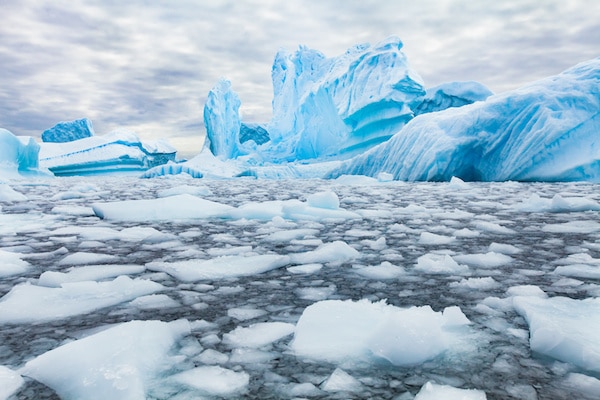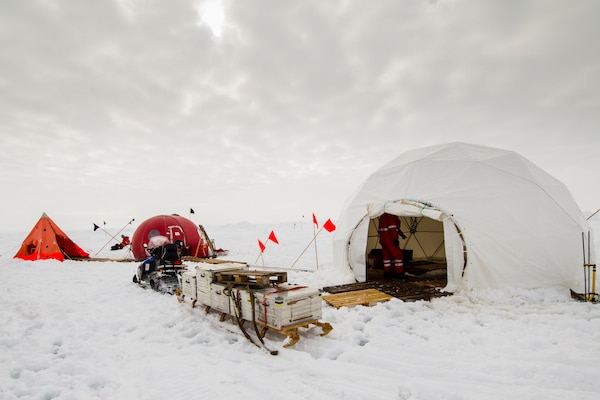15 Fun Facts About Antarctica for Kids

Antarctica, the southernmost continent on Earth, is a fascinating place filled with wonder and mystery. While it may seem like a barren land of ice and snow, there is so much more to discover about this icy paradise. Whether you’re a curious kid or an adult with a thirst for knowledge, here are 21 fun facts about Antarctica that will surely amaze you!
- The Dry Valleys, located in Antarctica, holds the record for being the driest places on Earth. These valleys have extremely low humidity and moisture levels, preventing snow and ice accumulation. As a result, they appear as vast expanses of dusty dirt.
- Antarctica, on average, claims the title of being the windiest place on our planet. Explorers and scientists who venture into this southern landmass have reported awe-inspiring wind speeds, reaching an astonishing 200 miles per hour.
- The Antarctic Ice Sheet is the largest ice mass in the world, stretching for miles. This colossal ice sheet can be up to four miles thick. In fact, Antarctica holds approximately 90 percent of the Earth’s freshwater ice and about 70 percent of the planet’s total fresh water.
- Scientific studies suggest that if the West Antarctic Ice Sheet were to melt, it would substantially increase global sea levels by approximately 16 feet.
- The Ross Ice Shelf, a massive floating tongue of ice extending from the main landmass of Antarctica, is a remarkable sight. It is the largest ice shelf ever discovered, covering an expansive area of over 196 square miles.
- While Antarctica may be predominantly covered in ice, it also boasts one of the world’s largest mountain ranges, the Gamburtsev Mountains. These majestic peaks stretch for over 745 miles and are estimated to have the highest points reaching around 11,500 feet. This makes them approximately one-third the size of Earth’s tallest mountain, Mount Everest.
- Lake Vostok is a captivating geographical feature concealed beneath the ice sheet, a freshwater lake buried under a staggering 2.5 miles of frozen water. Comparable in size to Lake Ontario, Lake Vostok is just one among more than 200 different bodies of water discovered beneath the Antarctic ice.
- While the Grand Canyon is renowned as one of the planet’s most remarkable natural rifts, Antarctica harbors another colossal trench that could rival this mighty American wonder. During a 2010 expedition, scientists stumbled upon an unnamed canyon that stretches an impressive 62 miles in length, spans over 5 miles in width, and plunges to depths of almost 1 mile. Speculation suggests that this colossal rift may even surpass its known boundaries, but further exploration is needed to unveil its true extent.
- Antarctica is home to Mount Erebus, the southernmost active volcano on Earth. Remarkably, it also hosts the only known “lava lakes,” which have maintained liquid magma despite the continent’s frigid conditions for countless years.
- Around the continent, 80 research stations are operated by 30 different countries. These facilities house approximately 4,000 inhabitants during the summer months but are occupied by only 1,000 individuals during the long and harsh winters.
- In January 1979, Emile Marco Palma became the first human ever to be born in Antarctica. Since this historic event, only ten other people have been born on the continent.
- Due to the Earth’s tilt, the sun does not rise in Antarctica from the vernal equinox to the autumnal equinox. This means that the continent remains in continuous darkness during the winter season.
- Conversely, the sun does not set in Antarctica during the summer months. This results in the continent receiving more sunlight than the equator during this time frame.
- In March 2000, a colossal chunk of ice broke off from the Ross Ice Shelf, measuring an impressive 167 miles in length and 25 miles in width. To put it in perspective, this ice chunk was roughly equivalent in size to the state of Connecticut.
- Deep Lake, situated in Antarctica, has such a high salt concentration that it defies the freezing temperatures. It remains liquid even when exposed to frigid temperatures as low as negative 59 degrees Celsius.

Antarctica: 15 Fun Facts for Kids opens up a world of wonder and curiosity for children and adults. While some may consider certain facts Useless Knowledge, it’s important to remember that even seemingly trivial information can ignite a sense of awe and spark further exploration. Embrace the joy of learning, whether it’s about the windiest place on Earth or the mysteries hidden beneath the icy surface, as every piece of knowledge expands our understanding of the incredible world we live in.
Follow Useless Knowledge on Instagram for more amazing facts.
Check out 35 Fun Facts to Make You Smarter that are guaranteed to blow your mind!